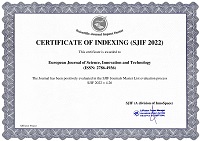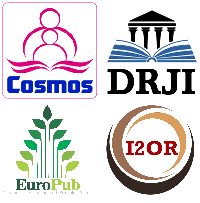International Brands: A Postcolonial Critical Discourse Analysis
Abstract
This study investigates the language of the taglines used by 100 brands to advertise for their products and the relation of the linguistic representation with the postcolonial identity that is envisaged to be constructed afterwards. The work uses Fairclough’s 1992 critical discourse analysis framework which is composed of the textual description of the discourse chosen first, then the interpretation of the discursive practices encapsulated in the case study and thirdly, the evaluation of the sociocultural meanings and ideas supported by the discourse. The corpus analysis points to the existence of an aspirational messaging and emotional appeal. It also highlights the ideas of a brand differentiation and a value proposition granted by the brands. The idea of the interconnectedness between the product and self-esteem realization fostered the consumerism effect and stressed the importance of technological advancement in a globalizing material world. Industrialization effect on the East-West relation is still encrypted in the post-colonial representation of the producer-consumer relation of knowledgeability, and hence, supremacy and dominance.
References
Bhabha, H. K. (1985). Signs taken for wonders: Questions of ambivalence and Authority under a tree outside Delhi, May 1817. Critical Inquiry, 12(1), 144-165.
Bhabha, H. K. (1994). The location of culture. Routledge.
Cook, G. (1992). The discourse of advertising. London and New York: Routledge.
Couldry, N. (2008). Media discourse and the naturalization of categories. In R. Wodak & V. Koller (Eds.), Handbook of communication in the public sphere (pp. 67-88). De Gruyter Mouton.
Muhtaroğulları A. (2021). A critical discourse analysis for advertisements in Instagram: Calvin Klein, Tommy Hilfiger and H&M. Br. J. Arts Humanit., 3(5), 140-148. https://doi.org/10.34104/bjah.02101400148
Fairclough, N. (1992). Discourse and Social Change. Polity Press.
Fairclough, N. (1995). Critical discourse analysis. Longman.
Fairclough, N. (2001). Language and power (2nd ed). Longman.
Fairclough, N. (2005). Peripheral Vision. Discourse Analysis in Organization Studies: The Case for Critical Realism. Organization Studies, 26, 915-939. https://doi.org/10.1177/0170840605054610
Fanon, F. (1968). The wretched of the earth. London, Penguin Press.
Fanon, F. (1984). Black skin, white mask. London, Pluto Press.
Flowerdew, J. (2004). The discursive construction of a world-class city. Discourse & Society, 15(5), 579–605.
Fowler, R., Hodge, B., Kress, G. R., & Trew, T. (1979). Language and control. Routledge.
Halliday, M. A. K. & Matthiessen, C. M. (2014). An introduction to functional grammar (4th ed.). London: Routledge.
Koller, V. (2008c). “The world in one city”: Semiotic and cognitive aspects of city branding. Journal of Language and Politics, 7(3), 431–450.
Koçer Güldal, B. & Su Sezer, E. (2023). Investigating the Influence of Ideology on Translation: A Critical Discourse Analysis of Slogans of Cosmetic Brands and Their Turkish Translations Through Gender Lens. Çeviribilim Özel Sayısı, 403-421.
McWilliam, G. & de Chernatony, L. (1989). Branding terminology — the real debate. Marketing Intelligence and Planning, 7(7/8), 29–32.
Oswald, A. (2012). Brand Discourse. In A. Oswald (Ed.), Marketing Semiotics: Signs, Strategies, and Brand Value (pp. 98–124). https://doi.org/10.1093/acprof:osobl/9780199566495.003.0005
Said, E. W. (1978). Orientalism (1st Vintage Books ed.). Vintage Books.
Sanz Sabido, R. (2019). The Israeli-Palestinian conflict in the British press. Palgrave Macmillan.
Schrøder, K. C. (2012). Discursive realities. In K. B. Jensen (Ed.), A Handbook of Media and Communication Research: Qualitative and Quantitative Methodologies (pp. 106–130). Abingdon: Routledge.
Spivak, G. (1988). Can the subaltern speak?, In C. Nelson & L. Grossberg (Eds.), Marxism and the interpretation of culture (pp. 271–313). Basingstoke, Macmillan.
Thurlow, C., & Aiello, G. (2007). National pride, global capital: A social semiotic analysis of transnational visual branding in the airline industry. Vis. Comm., 6(3), 305–344.
van Dijk, T. A. (2015). Critical discourse analysis. In D. Tannen, H. E. Hamilton, & D. Schiffrin (Eds.), The handbook of discourse analysis (2nd ed., pp. 466-485). Wiley Blackwell.
Williams, R. (1961). Advertising: The Magic System. The long revolution. Chap 29.
Copyright (c) 2024 Yagouta Beji

This work is licensed under a Creative Commons Attribution 4.0 International License.


 ISSN
ISSN 











